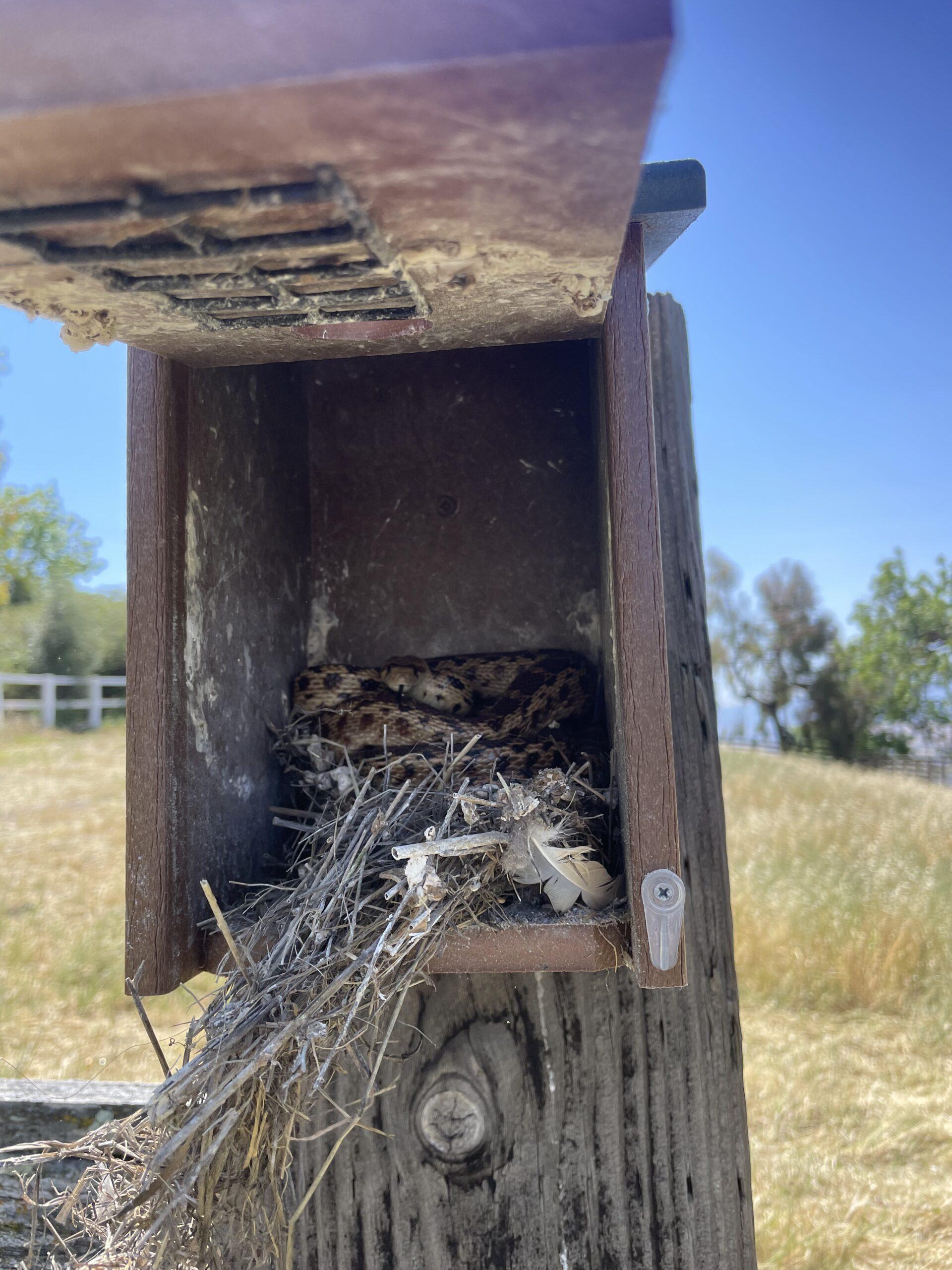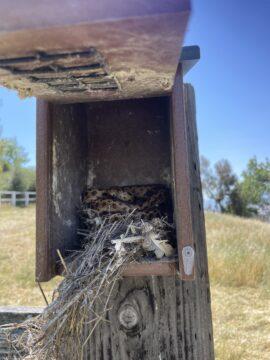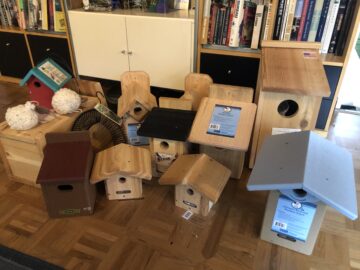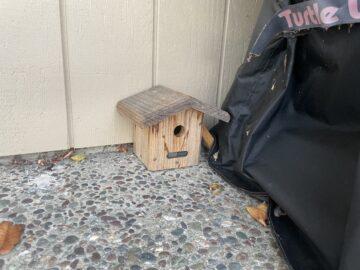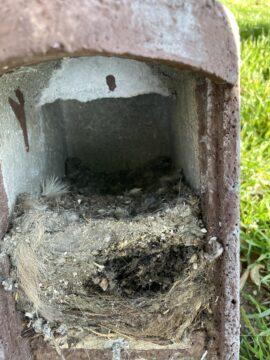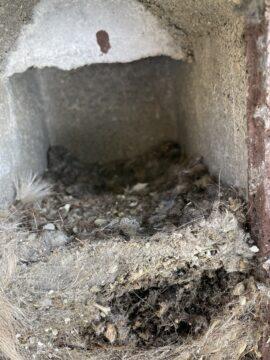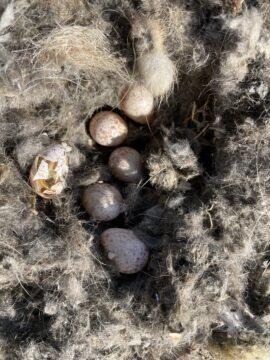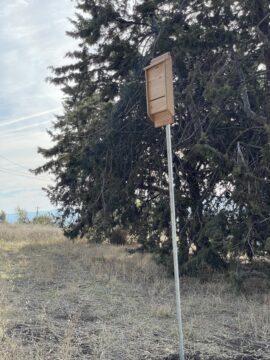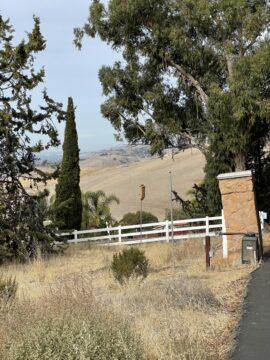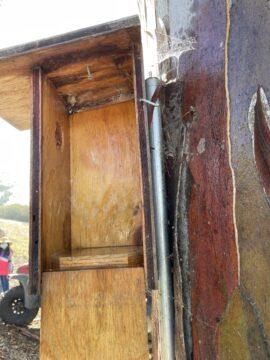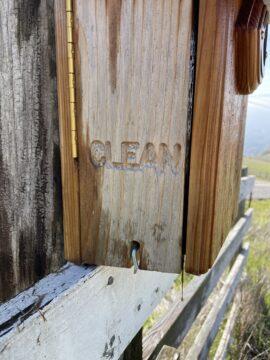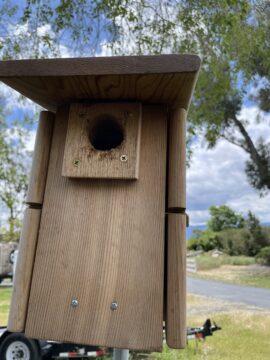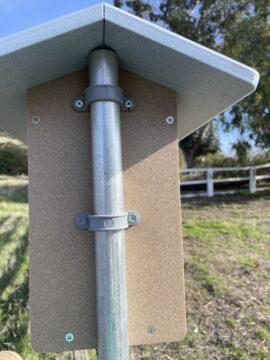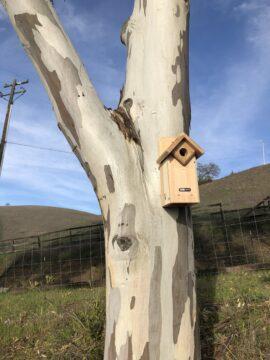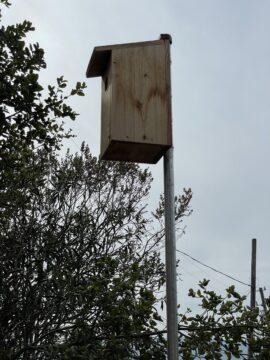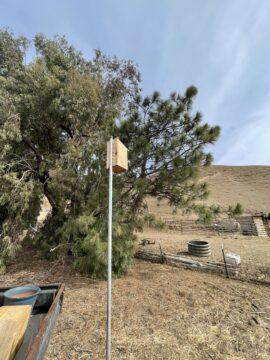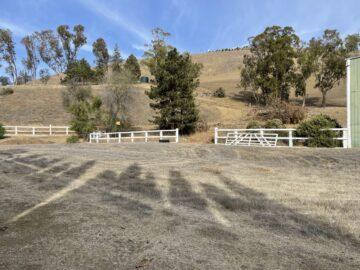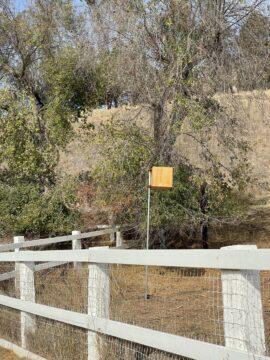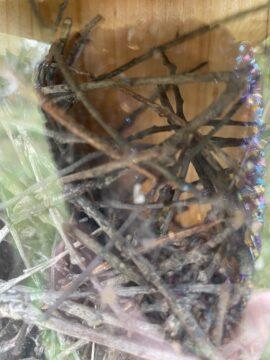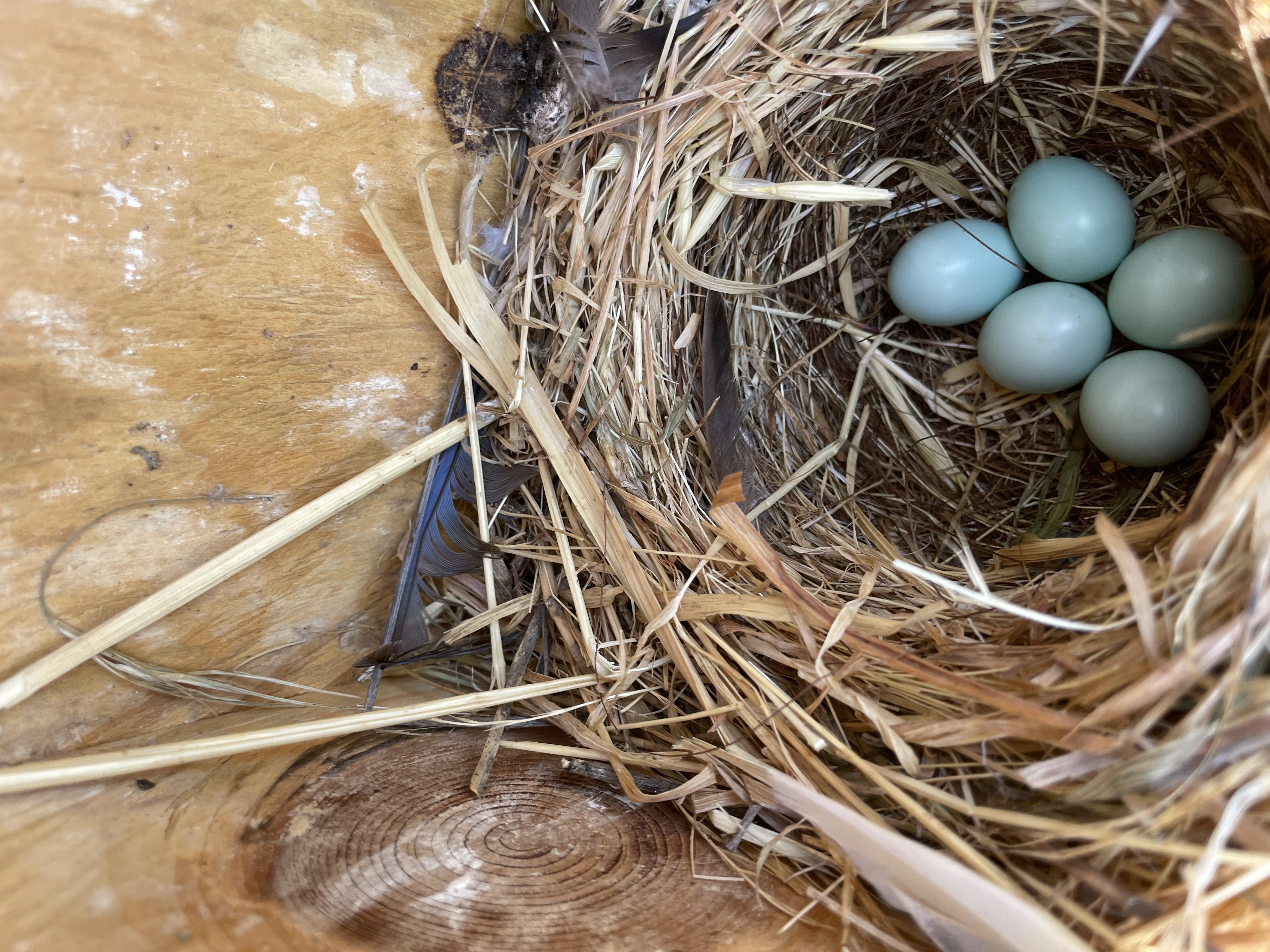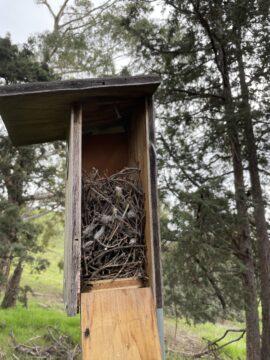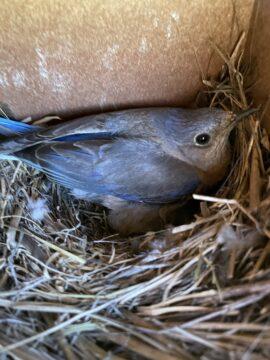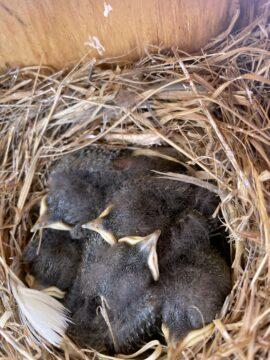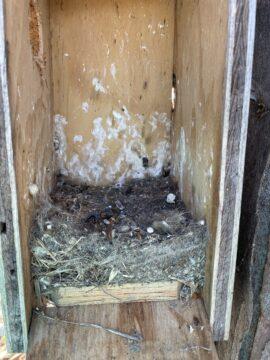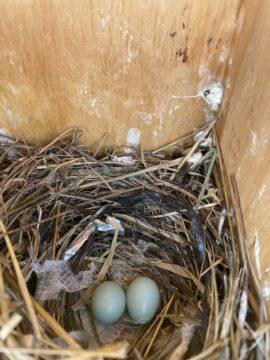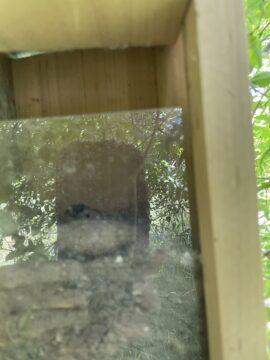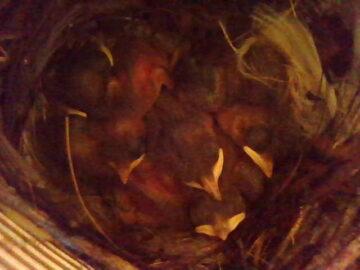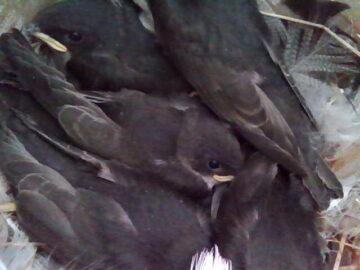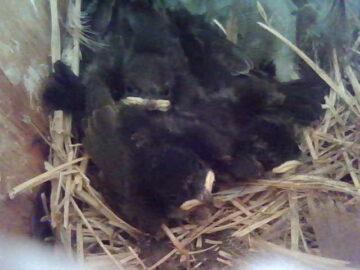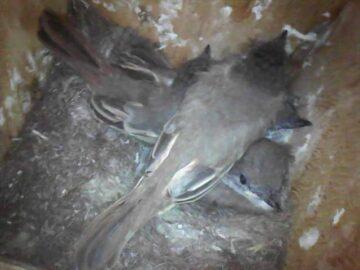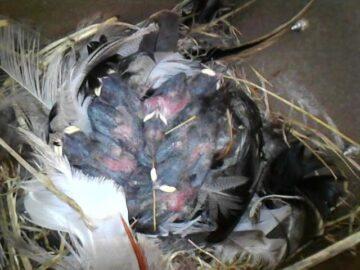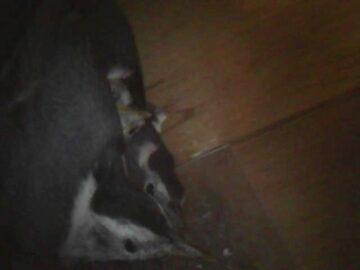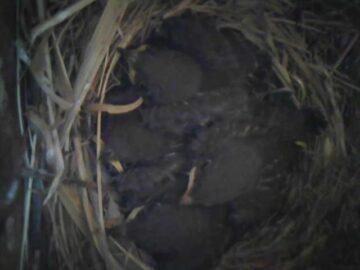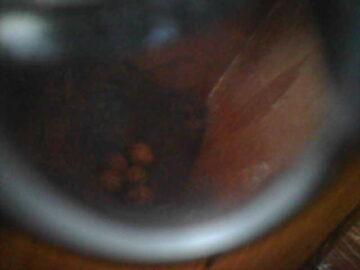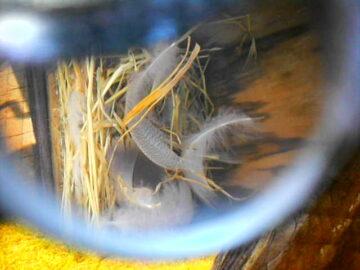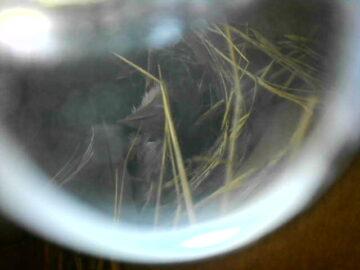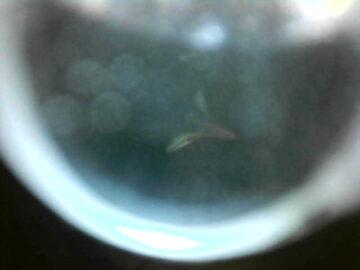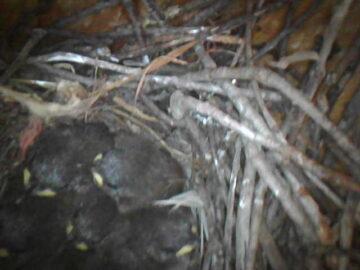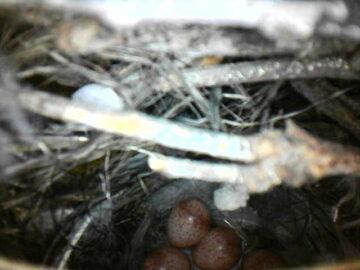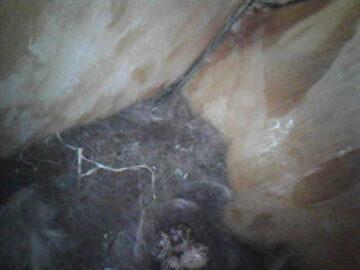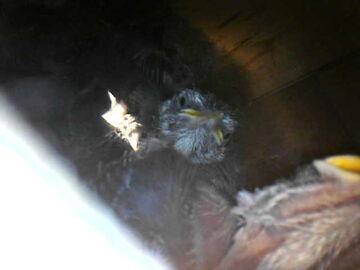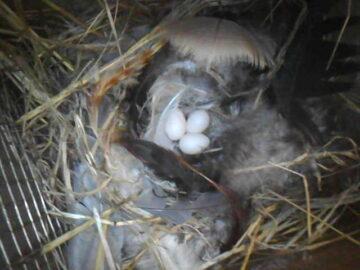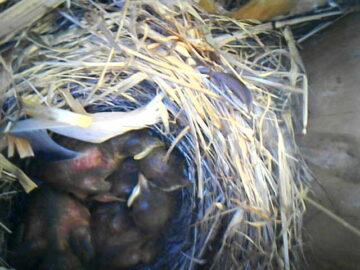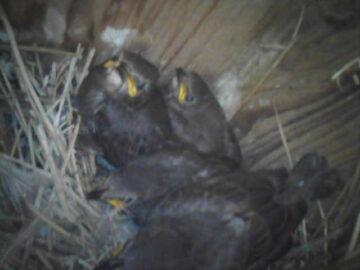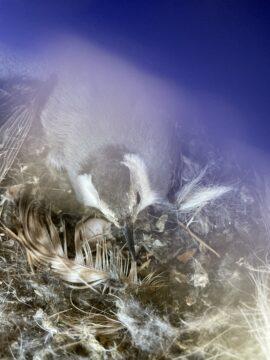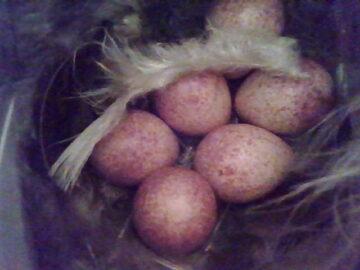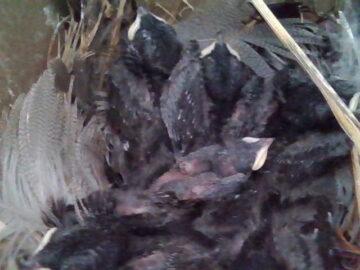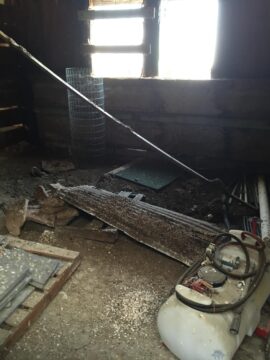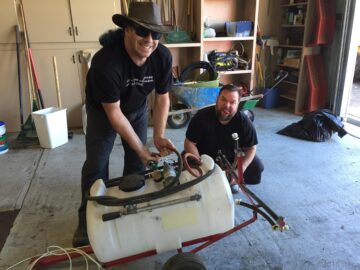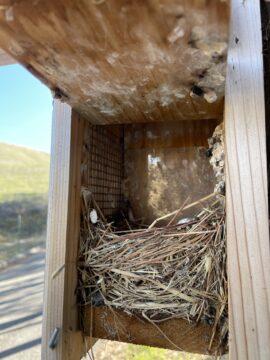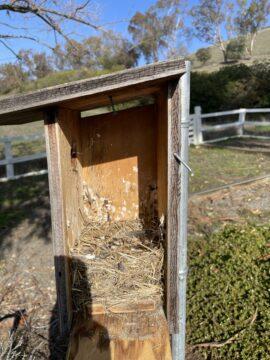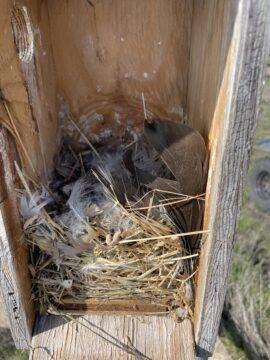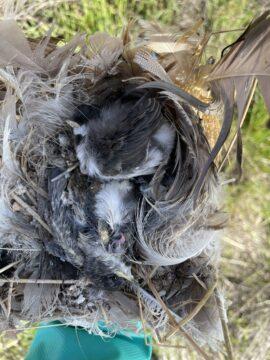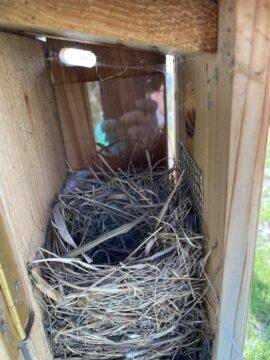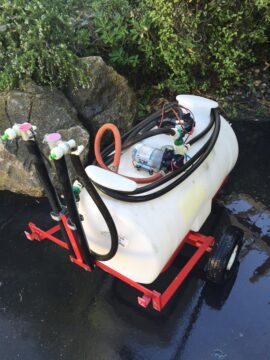Way back in May of 2018, we installed our first round of nest boxes. I posted an update of sorts regarding their success here in 2019. Well, now I have even more updates, as we have added even more nest boxes!
I have also become somewhat of an expert on what styles work best in terms of being able to monitor and maintain–and most importantly, which ones are used by birds to successfully raise a family.
So what works? Not small boxes, for starters. We disliked greatly the red box on the far left and the two wee boxes in the center of the first pic below. Supposedly sized for Chickadees, Titmice and other small-cavity nesters, they have been more useful for the occasional Lesser Goldfinch fledgling that has been bullied by a Scrub Jay. Western Fence Lizards also love to hang out in them when placed on the ground near the house; we have one box just outside the kitchen for expressly that purpose (second pic).
Another failure is the short dark brown box at the top of this post. It’s not deep enough, so no birds will use it.
What else doesn’t work? Concrete boxes. I tried one out and the moisture build up meant eggs couldn’t be incubated properly. Plus the front plate was really difficult to remove, making inspections difficult, but that sums up monitoring nest boxes in general (side note: I’ve developed an awesome solution that I’ll cover in a bit).
So what does work? Well, the first round of boxes all can be opened from the side, so one can peek and monitor activity, and that worked ok. I always worry about things falling out of the box when trying to monitor, so I tried out a bunch of options from Duncraft and Birds Choice that open from either side, with plexiglass on one side so nothing can fall out. The problem is the plexiglass gets very dirty during nesting season, and reflections can make it difficult to actually see if there is anything inside–usually a problem if a wren or nuthatch family is making use of the box. Now I primarily look for boxes that are just well-made and have some sort of reinforcement at the entry hole to prevent predation and parasitic nesting. This is because I have invested in borescopes! You heard that right. For a mere $30 I picked up a bluetooth Depstech camera that I use with a spare iPad.
Since the original 10 boxes, we have significantly expanded our ADU offerings here at the ranch. (Just in case anyone from the Santa Clara County Planning Department is reading this, I’m using the acronym ADU facetiously, as we do not actually have additional human dwelling units here; please don’t come and start issuing zoning violations.) We do, however, have lots of nest boxes for wildlife–besides the small ones sized for swallows and bluebirds, we have one for owls and a couple sized for kestrels and/or flickers, and a very swanky bat box.
Originally our monitoring method was to flip one side of a box down and quickly snap a picture while observing the key tenets of good nest box monitor behavior. Here’s a selection of images from the last few years:
Two seasons ago I started using a borescope to monitor, and it is a game-changer. Granted, the image quality hasn’t been great, but the ability to minimize any disturbance to the physical nests and any tiny recently hatched birds is worth the tradeoff, and I’m currently researching a newer option for next year’s season, which I hope will provide better images.
Here’s a selection of images gathered via the scope. We have all sorts using the boxes, from Western Bluebirds and Ash-Throated Flycatchers to White-Breasted Nuthatches and Tree Swallows. We even had a group of mitey European Starlings.
Currently my favorite small boxes are the Duncraft Ultimate Bluebird House; while it’s very pricey, for a wood box it has held up very well. I also really like the Birds Choice Ultimate Bluebird House in Taupe and Blue Recycled Plastic. I just installed a Duncraft Bird-Safe® EZ Observation Noel Guarded Bluebird House which I’m hoping turns out not to be as fiddly as it seems to be so far, as the mesh baffle seems promising–so much so that I may make some of my own for some of the older boxes and retrofit them next cleaning cycle.
The cleaning cycle is pretty simple. Every fall all the boxes get a good cleaning with any old nests tossed, a scrubdown with bleach and a solid rinsing. I now load up the mini truck with the spare water tank that was abandoned in the barn by the previous owners. Agent Smith and Agent Eric modified it a while back so that I can run it off the truck battery, which significantly speeds up the entire cleaning process.
Sometimes it’s not just feathers, grass and bird poop I need to clean out though–sometimes a dead nestling or even adult bird is in the box; while very rare, it’s always super sad. Once during nesting season there was even a medium-sized gopher snake in one of the boxes (first pic below)! I removed the snake and swapped the old box for another one, which I then mounted on a spare bit of EMT (electrical metallic tubing; second pic) to prevent another reptile invasion. That very next year a single clutch of seven Tree Swallows successfully fledged in the box.
Finally it’s confession time: I wrote this post nearly a year ago but never got around to publishing it, so the next post will be yet more words about nest boxes, as I provide a mini-update.

